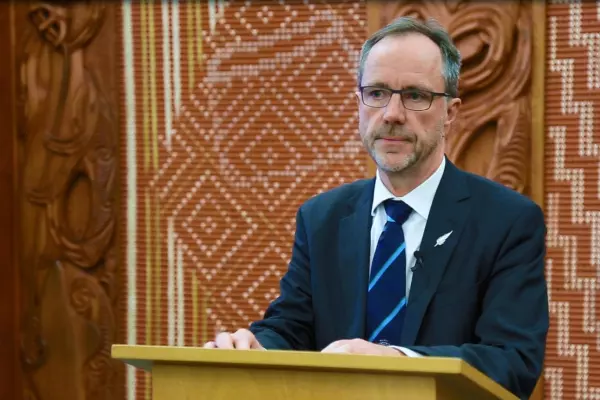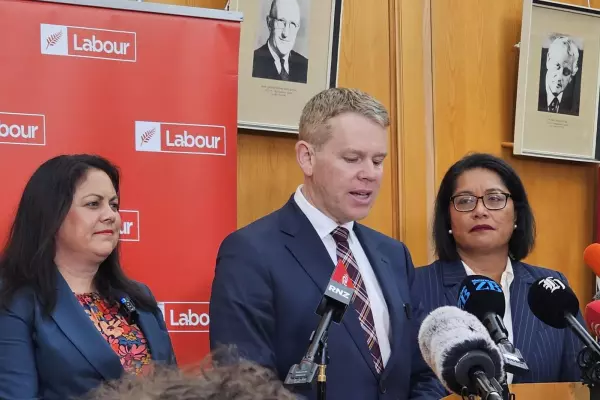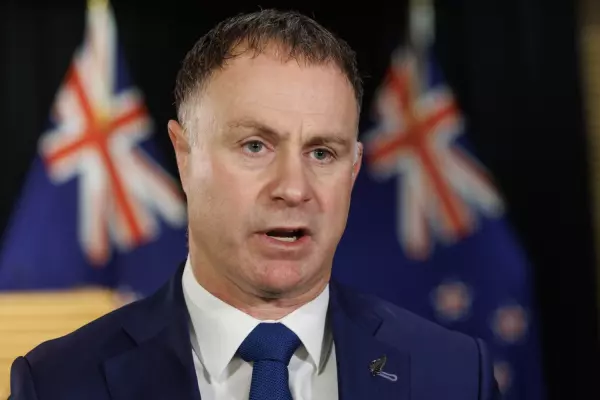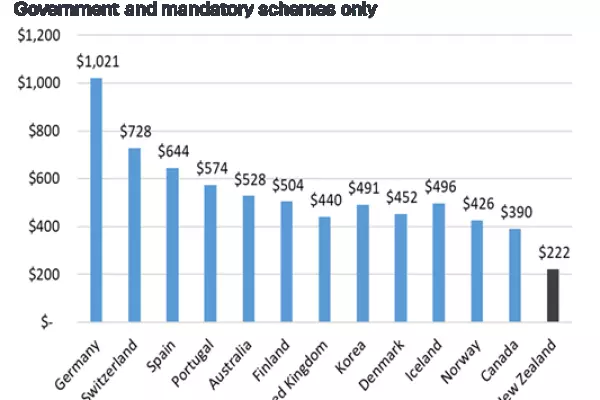The government says it’s open to dialogue over its three waters policy – but that dialogue seems to go around in circles and end up in a cul de sac over how new infrastructure will be paid for without blowing out people’s rates.
The opposition from councils is mainly focused on the lack of control and influence they would have over the proposed water entities.
They would still nominally own them, but the Water Service Entities Bill appears to be stripping away every right that’s normally associated with the concept of ownership.
The government and its advisers say that’s the point – the bankers require us to build a Great Wall of China separating the water entities and their owners.
No doubt you’ve heard the term “balance sheet separation” by now – and I would have put it in my opening paragraph, if not the headline if it wasn’t a sure kiss of death for readership.
But before you click away, the point of my story is council balance sheets aren’t the obstacle they’re made out to be and shouldn’t stand in the way of a genuine “peace process” over three waters.
What did she say?
Journalists did put words in the Prime Minister’s mouth by getting her to say “Yes” to “Is splitting assets of council balance sheets a bottom line?”
But after having a couple of seconds to think it through she backtracked and clarified that impacts on the cost of living were her real bottom line.
A quick sidebar on council debt – since at least 2015 governments have been worried about the ability of local government to finance the infrastructure it needs to build.
First, there was the problem of councils reaching their effective debt ceilings, and second, there was the question of how to service the increased debts.
Both implied massive, short-term increases in rates if other solutions couldn’t be found to spread the cost of assets that have a lifetime across multiple generations.
Back then infrastructure to support housing development in the “growth cities” of Auckland, Hamilton, Tauranga and Queenstown was the main concern.
Then attention began to turn to water, with councils asking for central government money and new powers such as water pricing.
Clever solution
As a result, long before it settled its three waters policy, Labour found a clever solution to the problem of debt ceilings: special purpose vehicles (SPV) that shift the debt off the balance sheet in a way that would satisfy the banks.
In 2020, it passed the Infrastructure Funding and Financing Act (IFFA) allowing SPVs to be created in the crown’s name that take responsibility for building specified infrastructure projects in return for being able to levy the local communities that benefit from them.
The first SPV to be proposed is currently on the desk of housing and urban development minister Megan Woods.
The SPV would provide $200m towards an $800m package of Tauranga roading projects, with the rest coming from rates and government grants including (fingers crossed) the national land transport fund.
The second SPV is likely (and perhaps ironically) to build a new wastewater treatment plant in the capital and is on track to be submitted early next year.
A spokesperson for Megan Woods told BusinessDesk the government is working on more proposals, but these projects were at an early stage.
“It is important to note that these infrastructure projects are often large-scale, complex projects that have long lead times (for example, to complete the consenting, design, and land acquisition required) and take time to get to the stage that they can be advanced to finance using [the IFFA].”
This includes Hamilton city which is looking at the growth area of Peacocke.
It wants to free up debt capacity to support housing outcomes in other parts of the city by refinancing a loan from the housing infrastructure fund and some other council debt into the SPV structure.
The fact that these are the only tangible proposals so far may also have something to do with the money the government is already throwing at councils via its infrastructure acceleration fund.
It is also a bit of a “clunky” process – councils need to get officials to recommend the proposal to Megan Woods who in turn must be persuaded to take it to cabinet, which needs to sign it off through a formal order in council.
It’s been said before
But the point is the tools already exist to give local authorities all the balance sheet separation they need, and could easily be extended to the new water entities.
It’s not the first time in the debate this has been suggested.
Economist Eric Crampton reminded BusinessDesk that Castalia brought it up in its infamous report, along with some other financial possibilities.
“For example, they point to the [IFFA] – though that legislation has not proved particularly workable for smaller projects.
“But they also point to revenue bonds designed to be ring-fenced from council main balance sheets, although they note that legislative reform could be needed to make it work.”
Revenue bonds are financed by revenues that are specified when the bond is issued, which can include volumetric water charges, connection charges, and levies on serviced properties.
Crampton said he expected it would only need a short piece of legislation authorising bonds that had no recourse to council main balance sheets, were subordinate to existing council debt in case of severe difficulties, and that credibly brought substantial penalties against council for anything that looked like a bailout of that ring-fenced debt.
Because this kind of infrastructure bond can be very long-lived, ideally with a term that matches the decades-long expected life of the infrastructure, annual debt servicing costs can be manageable.
“They provide a particularly promising way of unlocking funding and financing for infrastructure where it’s needed while building in tighter scrutiny of proposed projects: investors will be less likely to back bonds for projects that do not stack up.”
Lost in the fray
Unfortunately, the Castalia report ignited a massive technical debate among economists over whether the cost savings that amalgamation was supposed to bring were as large as the government’s advisers claimed.
Their suggestion of alternative financial structures was lost in the fray.
The only published retort to Castalia’s suggestion that other financial structures were possible appears to be this one from the Department of Internal Affairs:
“On the potential for more efficient use of finance to lower costs, Castalia does not comment on the reality that councils would face limited borrowing capacity relative to a regulated water services entity.”
The Brown plan
Auckland mayor Wayne Brown also believes there are other ways of getting around the balance sheet issue and has proposed the government establish a water infrastructure fund that would act like the Local Government Funding Agency.
That agency is essentially a financial intermediary collectively owned by councils that packages up all the debt they want to borrow.
The details about how Brown’s fund would work are scant, with the two-page proposal simply saying it would “manage debt and financial arrangements” and that it could “hold debt off the council balance sheets”.
His office did not respond to BusinessDesk’s request to elaborate on how this would work but did issue a brief statement.
“Mayor Brown wants to give the prime minister and her ministers the courtesy of time and space to work out their next steps on this difficult and divisive but very important policy issue.”
The spokesperson said Brown and his fellow mayors have put forward a good-faith proposal which he believes is being taken seriously by the government.
“Mayor Brown is encouraged by the prime minister’s remarks last week and over the weekend.”
It doesn’t really matter if the financial thinking behind the Brown plan hasn’t been well developed – the point is there is more than one way to skin the balance sheet cat and that’s a good place for dialogue to start.
There can be peace in our time, but first – about those amalgamation benefits…














